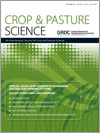Wheat crops usually yield more when grown after another species than when grown after wheat. Quantifying the yield increase and explaining the factors that affect the increase will assist farmers to decide on crop sequences. This review quantifies the yield increase, based on >900 comparisons of wheat growing after a break crop with wheat after wheat. The mean increase in wheat yield varied with species of break crop, ranging from 0.5 t ha–1 after oats to 1.2 t ha–1 after grain legumes. Based on overlapping experiments, the observed ranking of break-crop species in terms of mean yield response of the following wheat crop was: oats < canola ≈ mustard ≈ flax < field peas ≈ faba beans ≈ chickpeas ≈ lentils ≈ lupins. The mean additional wheat yield after oats or oilseed break crops was independent of the yield level of the following wheat crop. The wheat yield response to legume break crops was not clearly independent of yield level and was relatively greater at high yields. The yield of wheat after two successive break crops was 0.1–0.3 t ha–1 greater than after a single break crop. The additional yield of a second wheat crop after a single break crop ranged from 20% of the effect on a first wheat crop after canola, to 60% after legumes. The mean yield effect on a third wheat crop was negligible, except in persistently dry conditions. The variability of the break-crop effect on the yield of a second wheat crop was larger than of a first wheat crop, particularly following canola. We discuss the responses in relation to mechanisms by which break crops affect soil and following crops. By quantifying the magnitude and persistence of break-crop effects, we aim to provide a basis for the decision to grow continuous cereal crops, strategic rotations or tactically selected break crops. In many wheat-growing areas, the large potential yield increases due to break crops are not fully exploited. Research into quantifying the net benefits of break crops, determining the situations where the benefits are greatest, and improving the benefits of break crops promises to improve the efficiency of wheat-based cropping systems.
How to translate text using browser tools
29 May 2015
Break crops and rotations for wheat
J. F. Angus,
J. A. Kirkegaard,
J. R. Hunt,
M. H. Ryan,
L. Ohlander,
M. B. Peoples
ACCESS THE FULL ARTICLE

Crop and Pasture Science
Vol. 66 • No. 6
May 2015
Vol. 66 • No. 6
May 2015
canola
crop sequence
grain legumes
meta-analysis
nitrogen
oilseeds
root disease




